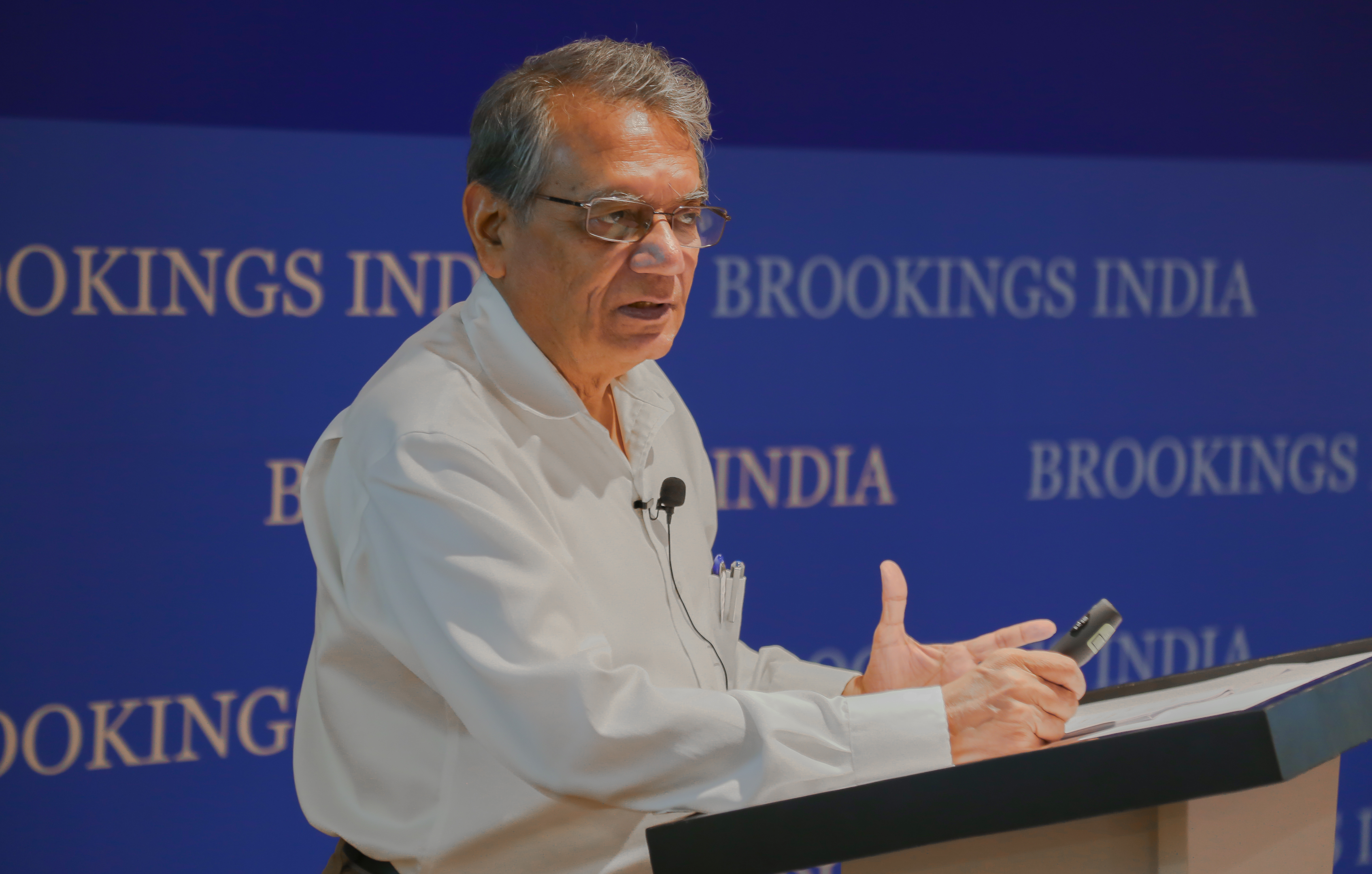

Content from the Brookings Institution India Center is now archived. After seven years of an impactful partnership, as of September 11, 2020, Brookings India is now the Centre for Social and Economic Progress, an independent public policy institution based in India.
This paper provides a narrative of Indian monetary policy since the North Atlantic Financial Crisis (NAFC) in the mid-2008 till the current period. The period 2009-13 was dominated by the joint monetary and fiscal stimuli of the Indian authorities prompted by the NAFC. These, along with some structural shocks and a hands-off attitude in forex market intervention, could have had their role in rising inflation and external account instability (leading up to the taper tantrum episode).
In this backdrop, after considerable discussion during 2013-2014, a Monetary Policy Framework Agreement (MPFA) was signed between the Government of India and the Reserve Bank of India (RBI) on February 20, 2015, which formally adopted flexible inflation targeting (IT) in India. Under the new statutory IT framework, a six-member Monetary Policy Committee (MPC) met for the first time on October 3 and 4, 2016.
While the IT regime so far has coincided with significant reduction in inflation in India, the atmosphere has been benign. Now that fuel prices have started moving in the north-east direction, a revised framework for the Minimum Support Price (MSP) in the Union Budget for 2018-19 has been proposed by the government and fiscal slippages have started happening, it remains to be seen whether IT can withstand more rough weather in the days to come.
Finally, in recent years, Indian monetary policy has been dominated by two significant events: the emergence of significant deterioration of Indian public sector balance sheets, and the demonetisation episode in November 2016. Monetary policy in both of these periods wrestled with fashioning an appropriate strategy for managing the impossible trinity.